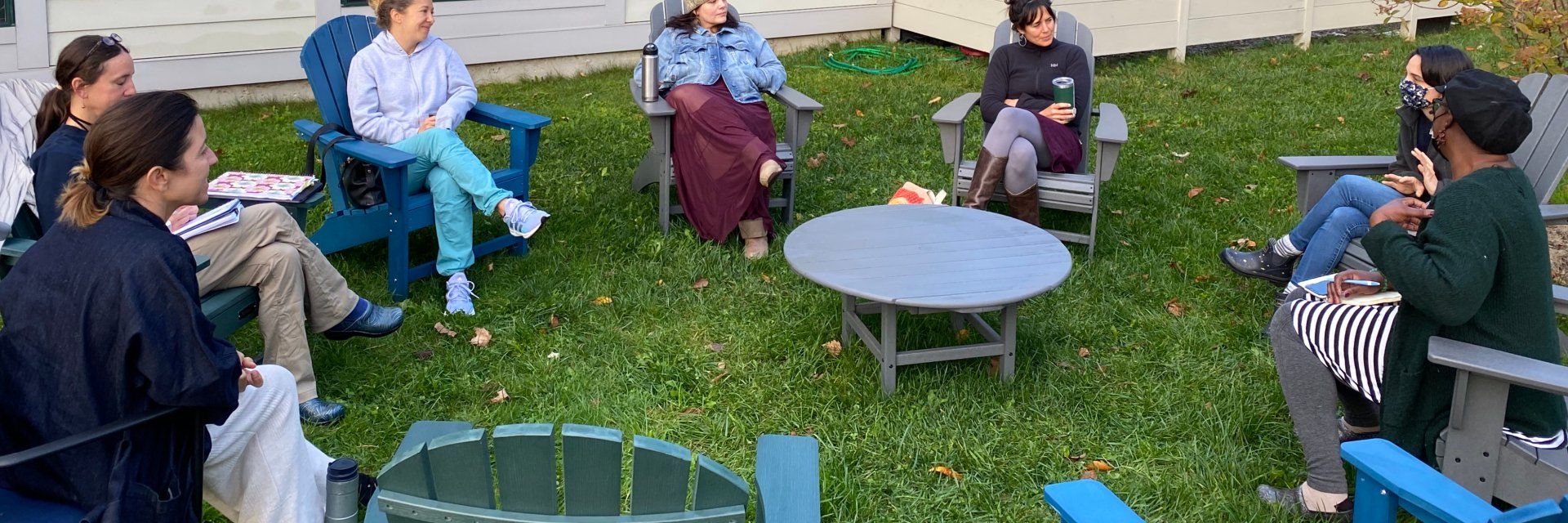Beyond the Classroom: Montessori Extending Into Adulthood

Montessori: it’s not just for children. What was originally created as an educational model for preschoolers in Italy has expanded significantly over time. Today, more and more adults are noticing there is potential for application far beyond the Casa dei Bambini. Whether you’re interested in learning more for yourself, or learning more about how Montessori education is trickling into various parts of our society, plenty of interesting changes are happening around the globe.
Training and Degrees
It may surprise you to learn that many people first hear about Montessori education through the lens of being a Montessori parent. The more people discover about the method, the more they become curious about the model, and this leads to many seeking their own Montessori credentials and eventually becoming guides.
Have you thought about Montessori education for yourself? If so, there are a number of options.
To become a Montessori-credentialed guide, it’s important to enroll in a training program recognized by a major Montessori organization. Two of the most respected are AMI (Association Montessori Internationale) and AMS (American Montessori Society). To learn more about affiliated training programs, visit their sites directly:
AMI Teacher Training | Association Montessori Internationale
About AMS-Affiliated Teacher Education Programs
Are you more interested in higher education? There are a number of programs offering master’s degrees in Montessori Education, and many include online options. Here is a great list for exploring education options for adults.
Montessori in the Workplace
People all over the world are beginning to recognize that the general philosophy of Montessori is extremely applicable in the workplace. If a model works well, why can’t it be applied elsewhere? Montessori schools are effective. They create an atmosphere of joyful learners that contribute to their communities. What if we modeled our workplaces to reflect these successful classroom environments?
Digital marketing professional (and Montessori mom) Amanda Shelley has some thoughts on what effective modern workplaces look like. Perhaps unsurprisingly, she draws comparisons from the different types of schools available to our children. She shares these ideas in this article.
Sophie Bryan, another Montessori parent and award-winning HR consultant, advocates for bringing Montessori principles into the workplace in order to drive innovation and employee freedoms. She believes this benefits both employees and the organizations they work for. Bryan explains these ideas in her TEDx talk and gives her thoughts on how we might make changes in our workplaces.
Shelley and Bryan are just two of many leaders currently advocating for a shift toward more Montessori-inspired work environments for adults.
Montessori in Prisons
Brian Walsh leads education programs in two prisons in Washington State. He and his wife also own and operate a school together. This diverse experience led him to draw conclusions about the similarities between the two environments, and use those experiences to create innovative solutions.
In this TEDx Talk Walsh shares the ways in which education in prisons is a smart investment, but also how we can make it effective by implementing some of the same principles as we do in children’s Montessori schools. The whole video is compelling, but jump to minute 8:14 if you’re short on time.
What might we consider when developing educational programs for incarcerated individuals? How can we create safe and appropriate tools and environments, while giving people control of their learning? Walsh has found solutions to these questions, and has found them to be highly successful.
Montessori for People with Dementia
The application of Montessori principles to care for people with dementia is becoming more and more extensive.
There have been numerous studies and academic papers published indicating Montessori principles are effective when applied to dementia care.
AMI even has a division of their organization dedicated to this emerging branch of study.
If you are the caretaker of an individual experiencing dementia, considering basic Montessori principles will help make your life easier as well as giving the individual an increased sense of joy and independence. Strategies will naturally change depending on the development and stage of memory loss. Some thoughts:
- What needs are not being met in the environment? How might small changes create a sense of independence?
- Label doors throughout the house with words written on index cards or sticky notes.
- Lay out necessary items to complete a task: clean clothes to change into after a shower or items to put together and eat a simple no-cook breakfast.
- What are the individual’s interests? How might those be incorporated into the environment?
- Leave out books and activities around the home for the person to notice and engage with. This might include puzzles, magazines, or even a broken alarm clock with simple tools to tinker with. If the person was creative earlier in life, leave out art supplies. If they loved music, make the songs they enjoyed available for them to listen to.
What changes can be made to the home to create a built-in structure of safety? Are there simple ways to prevent potentially harmful situations? This is the application of ‘freedom within limits’. Once dementia progresses to a certain point, it’s not safe for a person to be completely independent. The key is to consider how to create an appropriate level of freedom.










